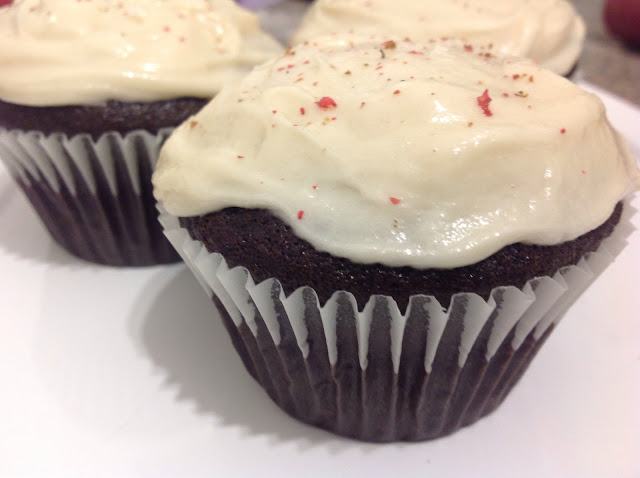This is hands-down the best bread I've ever had. The recipe here is adapted from Jim Lahey's excellent book My Bread. His technique works so well that we never buy bread anymore - we just bake it! There are two versions of this bread, depending on how long you're willing to let it rise. The slow rise version uses less yeast, and takes 12-16 hours to rise, but the added fermentation time makes the bread taste more complex. The quick version only takes four hours to rise, but it uses a heck of a lot more yeast.
Note: We have modified the bread recipe for a smaller loaf with less salt. No-Knead Bread 2.0 is healthier and doesn't end up moldy before you can eat all of it. We've also improved the techniques below.
Ingredients
No-Knead Bread 2.0
3 3/4 cups all-purpose or bread flour
1 tsp salt (or less)
1/4 tsp yeast
1 3/4 cups cool water
No-Knead Bread: Slow rise
6 cups all-purpose or bread flour
2 1/2 tsp. salt
1 tsp. yeast
3 cups water
Quick rise
6 cups all-purpose or bread flour
1 tbs. salt
1 1/2 tbsp. yeast
3 cups water
Preparation
1. Mix all dry ingredients together in a large bowl. You can use white or whole wheat flour, or a combination depending on how you like it. The quantity of salt you add affects the crispiness of the crust, but you can use less.
2. Add the water and mix until all of the flour is absorbed. You don't need to knead the bread, just mix and let it be. If there is extra flour in the bowl, add more water a few tablespoons at a time until the loaf is sticky.
3. If you're attempting the slow rise dough, cover your bowl with plastic wrap to keep it from drying out. Let the dough rest for 12-16 hours, or until it has doubled in volume. For the quick rise, do the same but let it rest for 4 hours.
4. Once the dough has risen, scrape it out of the bowl onto a well-floured surface, like a silicone mat or parchment paper. At this point you can either divide the loaf into two, form it into a neat shape (like baguettes, buns, pretzels), or keep it as one large boule. These instructions are for an undivided loaf:
With well-floured hands, shape the dough by folding the edges in towards the center four times (top, bottom, left, right or some variation thereof). Next, flip the loaf over so that the seam you've created is on the bottom, and shape the dough into a round ball with your hands. If the dough is sticky, sprinkle a bit more flour on it. Cover the dough with a tea towel and let it rest for 1 to 2 hours, until it has doubled in volume. If, when you poke the dough, it springs back immediately, let it rest another 15 minutes. If your finger leaves a 1/4" deep indent, the dough is ready to bake.
Note: If you would like your bread to have something interesting on the outside like wheat bran, cornmeal, flax, poppy seeds sesame seeds etc., you can either sprinkle those ingredients on now (after you have shaped the loaf), gently lifting it and sprinkling underneath, or you can wait 30 minutes (my approach) until the bread has moistened again and then add them.
 |
| Bread 2.0: smothered in wheat bran! |
5. Preheat your oven to 475 degrees, 40 minutes before the end of the dough's second rise. If you're baking the bread in a French or Dutch oven (the best method), put your vessel in the oven now, with the lid on (make sure the handle is heat-proof), so that it can preheat. If you don't do this now, you might crack your vessel by putting it into the already-hot oven. If you're using bread pans or a baking sheet (use parchment paper underneath), you can put a shallow heat-proof container of water into the oven now, to rest underneath your bread. This will create steam when the bread is cooking, which will condense on the surface of the cold dough, ultimately helping the crust not to burn, but keeping it crispy. Cooking your bread in a French oven accomplishes a similar thing, but keeps the steam contained in the vessel, and results in a better bread.
6. Once the oven is preheated and the dough has rested, remove your cooking vessel from the oven. Make sure the dough is well-floured and is not stuck to the surface it's resting on. Once you're ready, flip the dough over and into your cooking vessel (gently!). Be careful because that sucker will be hot. Replace the lid and put the vessel back in the oven.
7. Bake your bread for 30 minutes with the lid on. Then take the lid off and bake it for another 25-30 minutes. Removing the lid part way is essential for getting a nice crust.
8. Once it's cooked, tip the bread out of the pot and onto a cooling rack. You should hear crackling noises at this point (called 'singing'), which means the bread is cooling. You should leave the bread for around an hour to cool. If you cut the loaf too soon, you'll halt the last stage of the cooking process and you can ruin the consistency of your baby.
9. Enjoy! Store your bread in a container, or in the (cooled) French oven itself, just not in the fridge or it will go stale faster.












